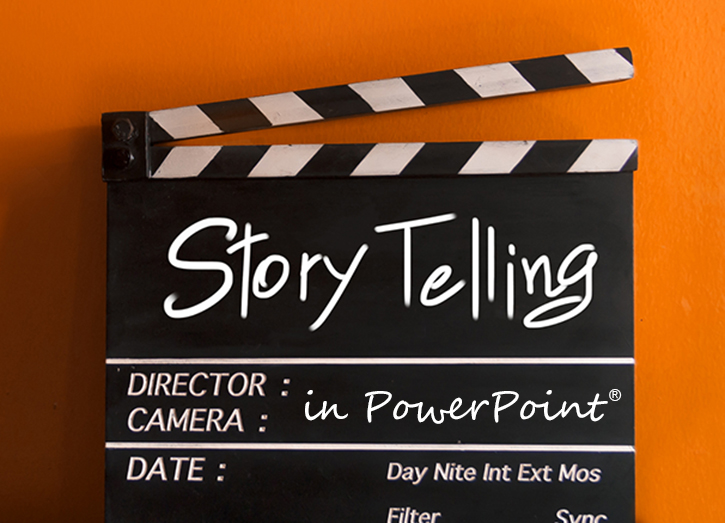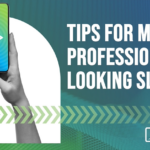Bring the Power of Storytelling to Your Next Business PowerPoint Presentation

Storytelling is a powerful communication tool and it can be used to great advantage as part of a business PowerPoint presentation.
The best stories are those that show a struggle being won. Free Solo, the documentary about free soloist climber Alex Honnold as he prepares to climb the 3,000-foot cliff face of El Capitan in Yosemite National Park, is a perfect case in point.
It’s edge of your seat storytelling, even when you know that (spoiler alert) Alex makes it.
Amidst the challenges brought on by COVID-19 – new ways of working, rapid transition to digital tools, closing and reopening supply chains, preparedness planning, return to work plans, customer care overhauls, etc. – it’s likely that your business has ample stories for excavation.
These are valuable commodities; opportunities to show your clients, customers, suppliers, internal (and remote) teams, how your business wins in the face of adversity.
The first rule of a great presentation is that it must grab the audience’s attention. This is particularly challenging in a world where attention is a scarce resource and businesses must constantly innovate to battle for it.
By harnessing some storytelling power – showing off the great heights you’ve scaled (figuratively, of course) – you will grab your audience’s attention and convince them of the messages you want to deliver.
“The ability to persuade, to change hearts and minds, is perhaps the single greatest skill that will give you a competitive edge in the knowledge economy — an age where ideas matter more than ever,” says Carmine Gallo, Harvard University teacher and best-selling author of The Presentation Secrets of Steve Jobs.
Stories help us change hearts and minds by:
- Generating empathy
- Fostering emotional attachment
- Demonstrating relate-ability
- Creating connection
- Making messages memorable
- Incentivizing an audience to act
Of course, you want beautiful slides in your business PowerPoint presentation, but without a story, they are simply beautiful slides. Only by knitting your slides together with a compelling narrative will you achieve your goals.
Here are a few tips from your design experts at eSlide to help you choose a great story and include it as part of your next presentation.
Decide Your Message
Start by deciding what the message is that you want to convey. Is it that big rewards often begin with taking a risk? Is it that even in the face of adversity your company continues to excel? Once you decide on your message, choose a story that illustrates it well.
Show the Struggle
Good stories need to show a challenge or conflict, otherwise they aren’t very interesting. Being open about your struggles will help your audience relate, empathize, and become involved in the resolution. Be sure to identify the conflict early and make sure to show how you solved it in the end.
Don’t Be Afraid of Failure
Don’t shy away from including mistakes, failure or barriers in your chosen story. So long as you include the steps you took to overcome the obstacles, including them highlights your business’ resilience and tenacity. Revealing struggles also makes you appear more authentic and accessible to your audience. This helps them empathize and relate to what you’re telling them and that helps them remember it.
Start with the End
Start by giving your audience the answer or resolution to your story. Research shows that people can only hold a limited amount of information in their working memories at one time. So, you want to be sure that you are giving them the information they need up front in your professional PowerPoint presentation. Always start with your main takeaway to give your audience the best chance of remembering it.
Follow A Traditional Storyline
Even though you’re giving your audience the main message or resolution up front, your presentation should still follow a natural story outline, i.e., beginning, middle and end. This makes it easy for them to follow and allows them to focus on the message. Following this natural progression also helps you build toward a strong ending where you can reinforce the key takeaway you gave them at the start.
Streamline Your Research
As tempting as it may be to include all your data points and background research in your PowerPoint presentation, it’s not going to help you win hearts and minds. Unless your audience has spent as much time as you have analyzing the data, they will only be overwhelmed by seeing all of it on your slides. It’s ok to use some detail to tell your story, but don’t get bogged down in unnecessary parts of the tale.
Use Visuals Judiciously
Compelling visuals in your PowerPoint will help you elicit a strong, collective response. You can use charts, tables, graphs, images, photographs and other visuals to help move your story along and provide detail, but make sure that anything you include contributes to your story and message in a meaningful way. All the content in your presentation should help propel your story forward.
The design experts at eSlide have been creating memorable presentations that get results for more than 20+ years. We are the “go-to” resource for business PowerPoint presentations for many top executives at Fortune 500 companies around the world. Contact us online or by calling 866.237.5433 for a free consultation. We’re ready to help you tell your next story.








